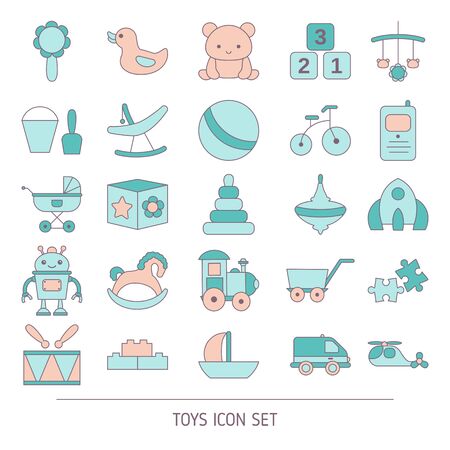Understanding Toddler Sleep Cycles
When your little one finally drifts off to sleep, there’s a remarkable process happening beneath the surface. Unlike adults, toddlers experience sleep in a unique way, moving through distinct cycles that are essential for their healthy development. Sleep is divided into two primary stages: REM (Rapid Eye Movement) and non-REM sleep. During non-REM sleep, the body repairs itself and builds up energy for the day ahead, while REM sleep is when the brain processes emotions and memories—crucial for your toddler’s growing mind.
What makes toddler sleep truly fascinating is how their cycles differ from ours. A toddler’s sleep cycle is much shorter than an adult’s, lasting about 45 to 60 minutes compared to our typical 90-minute cycle. This means they transition between light and deep sleep more frequently throughout the night. Because of these rapid shifts, toddlers are more likely to wake up or stir in between cycles, which is why it sometimes feels like you’re constantly tiptoeing around their bedroom at night.
Understanding these patterns can help us as parents be more patient and supportive when bedtime isn’t as smooth as we hope. By learning about the science behind these sleep cycles, we can gently guide our children toward restful nights and peaceful naps, embracing each stage of their growth with empathy and love.
2. How Sleep Cycles Shape Rest Quality
Understanding the way toddlers sleep is a bit like unlocking a gentle secret about how their little bodies and minds recharge overnight. Unlike adults, toddlers have shorter and more frequent sleep cycles—typically lasting about 45 to 60 minutes each. These cycles alternate between light sleep, deep sleep, and REM (Rapid Eye Movement) sleep, all of which play a unique role in helping your child feel refreshed and ready for the day ahead.
The Unique Structure of Toddler Sleep Cycles
During each cycle, toddlers move through different stages of sleep that support both physical growth and brain development. Deep sleep is when their bodies do most of the growing and healing, while REM sleep helps process new experiences and emotions. Because their cycles are shorter, toddlers may be more prone to night awakenings or restlessness.
How Cycle Length Affects Morning Alertness
If a toddler wakes up during a lighter phase of sleep—rather than being roused from deep sleep—they are more likely to feel bright-eyed and cheerful in the morning. However, if they’re awakened abruptly from deep sleep, grogginess or crankiness can follow. This is why timing bedtime routines and morning wake-ups with natural cycle completions can make a big difference in how rested your child feels.
Comparison: Toddler vs. Adult Sleep Cycles
| Toddler Sleep Cycle | Adult Sleep Cycle | |
|---|---|---|
| Cycle Length | 45-60 minutes | 90-110 minutes |
| Number of Cycles per Night | 8-10 | 4-6 |
| Frequency of Night Awakenings | More frequent | Less frequent |
| Sensitivity to Disruptions | High | Moderate |
This special rhythm is why even small disruptions—like loud noises or skipped naps—can have a big impact on your toddler’s mood the next day. Being aware of these patterns helps you create a calm bedtime environment and set routines that support your child’s natural sleep needs, making mornings brighter for everyone.
![]()
3. Common Challenges in Toddler Sleep
As parents, it’s natural to wonder why your toddler’s sleep can be so unpredictable. Understanding the common disruptions in toddler sleep—and how these tie into their unique sleep cycles—can offer both comfort and clarity during those long nights.
Night Wakings
One of the most frequent challenges parents face is night wakings. Many toddlers wake up multiple times a night, sometimes crying or seeking comfort. This isn’t just a phase; it’s closely linked to their natural sleep architecture. Toddlers cycle through lighter and deeper stages of sleep more often than adults. As they transition from one stage to another, especially from deep to lighter sleep, they’re more likely to briefly wake up. These moments are normal but can be disruptive if your child has trouble settling back down on their own.
Restlessness and Difficulty Settling
Another common concern is restlessness—tossing, turning, or even talking during sleep. This restlessness often peaks during certain parts of the sleep cycle, particularly when transitioning between REM (rapid eye movement) and non-REM sleep. Because toddlers spend a greater proportion of their night in lighter stages of sleep compared to older children and adults, they are more sensitive to external noises or changes in their environment, making it harder for them to settle.
The Role of Sleep Cycles in Disruptions
These challenges aren’t signs that something is wrong with your child; rather, they reflect the natural development of their brain and body. Their sleep cycles are still maturing, which means transitions between stages aren’t always smooth. Factors like teething, growth spurts, or even new experiences during the day can also cause extra disruptions as their brains process and adapt while asleep.
Nurturing Through Understanding
Recognizing that these challenges are part of healthy growth can help you respond with empathy and patience. By supporting your toddler through these disruptions—offering comfort without reinforcing negative sleep associations—you’re helping them learn vital self-soothing skills that will serve them well throughout childhood and beyond.
4. The Role of Bedtime Routines
Establishing a consistent bedtime routine is one of the most nurturing gifts you can give your toddler. Science shows that familiar evening rituals help regulate your child’s internal clock, making it easier for them to fall asleep and stay asleep through the night. In the United States, many families cherish simple yet effective bedtime practices that gently signal to toddlers that it’s time to wind down.
Classic American Bedtime Practices
| Bedtime Practice | How It Helps |
|---|---|
| Storytime | Reading together soothes your child, encourages bonding, and provides a predictable end-of-day activity that cues the brain for sleep. |
| Winding Down | Quiet play, dimming lights, or soft music tells the body to relax and prepares the mind for rest. |
| Bath Time | A warm bath signals transition from play to rest and helps lower body temperature for better sleep onset. |
| Cuddles & Goodnight Kisses | Physical closeness reassures toddlers and creates positive associations with bedtime. |
The Science Behind Routines and Sleep Cycles
Toddlers thrive on predictability. Repeating calming activities in the same order each night helps their bodies recognize when it’s time to shift from wakefulness into deeper stages of sleep. These routines trigger the production of melatonin, the hormone responsible for sleepiness, supporting healthy sleep cycles and overall nighttime rest.
Nurturing Connection Through Routine
Your gentle presence during storytime or as you tuck your little one in strengthens your bond and offers comfort after a busy day. Over time, these rituals become treasured moments of connection, soothing both parent and child as they transition into peaceful slumber.
5. How Parents Can Support Better Sleep
Understanding the science behind toddler sleep cycles empowers parents to create a nurturing environment that truly supports restful sleep. Here are gentle, research-backed strategies you can try at home:
Establish a Consistent Bedtime Routine
Our little ones thrive on predictability. Creating a calming bedtime routine—such as a warm bath, story time, and quiet snuggles—signals to your toddler’s brain that it’s time to wind down. Science shows that consistency helps align their internal clock with natural sleep cycles, making it easier for them to fall asleep and stay asleep.
Create a Sleep-Friendly Environment
Just like adults, toddlers sleep best in a space that feels safe and cozy. Keep their room cool, dim the lights as bedtime approaches, and minimize noise. Consider using blackout curtains or a soft white noise machine if your child is sensitive to light or sounds. These small changes can reduce disruptions during lighter phases of their sleep cycle.
Pay Attention to Sleep Cues
Toddlers often show subtle signs when they’re getting sleepy—rubbing eyes, yawning, or becoming fussy. Responding promptly to these cues can help you put them down before they become overtired, which makes falling asleep harder and disrupts healthy sleep cycles.
Encourage Daytime Activity
Active play during the day helps toddlers build up enough “sleep pressure” to enter deep sleep more easily at night. However, aim to keep high-energy activities earlier in the day so your child has time to unwind before bed.
Mind Naps but Don’t Skip Them
Naps are crucial for toddler development and help prevent overtiredness—a major disruptor of restful nighttime sleep. Try to keep nap times consistent with what’s recommended for your child’s age, while gradually adjusting as they grow.
Offer Comfort and Reassurance
If your child wakes during the night (which is common at the end of a sleep cycle), offer gentle comfort without fully waking them if possible. A soft pat or soothing words can help them drift back into deeper rest.
By tuning into your toddler’s unique needs and respecting the natural rhythm of their sleep cycles, you’re not only helping them get better rest—you’re also fostering lifelong habits for healthy sleep and emotional well-being.
6. When to Seek Professional Advice
As parents, it’s natural to worry when your toddler’s sleep doesn’t look like what you expected. While there is a wide range of normal when it comes to how little ones sleep—some toddlers nap for hours, others barely at all—it’s important to know when certain patterns might signal a need for extra support. Most sleep variations are simply part of your child’s unique growth and development. However, if your toddler consistently has trouble falling asleep, wakes up frequently throughout the night with distress, snores loudly, or seems excessively tired during the day despite getting enough sleep, these may be signs worth discussing with your pediatrician.
Spotting Sleep Issues That Need Pediatric Attention
If you notice that your toddler is struggling to breathe during sleep (such as gasping or pauses in breathing), regularly experiences nightmares or night terrors that disrupt their rest, or if their lack of sleep affects their mood and ability to engage during the day, reach out to a healthcare professional. These signs could point to underlying issues like sleep apnea or behavioral challenges that benefit from early intervention.
Understanding Normal Sleep Variations
Remember, every child is different—some thrive on ten hours of nightly sleep, while others need closer to twelve. Changes in routine, teething, developmental leaps, and even family stress can all temporarily impact sleep cycles. What matters most is that your child generally wakes refreshed and is able to participate in daily activities with energy appropriate for their age.
Reassurance for Parents
Most sleep hiccups are just bumps along the road of growing up. If you’re ever unsure about whether your toddler’s sleep habits fall within the healthy range, don’t hesitate to consult your pediatrician. Your concern shows how deeply you care—and together with trusted professionals, you’ll find the best path forward for your child’s rest and well-being.


